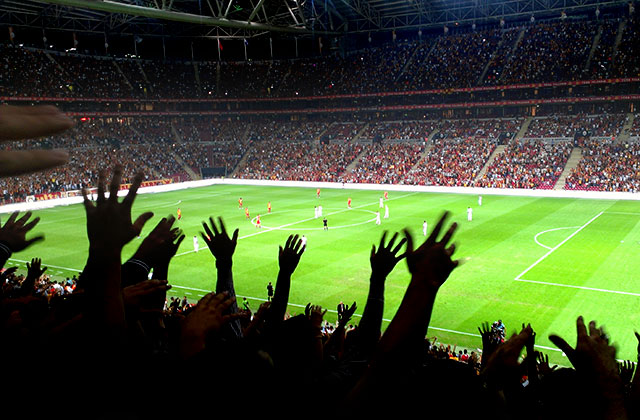While writing an article about the World Cup bidders for 2018 for the Bristol Rovers programme the other week I stumbled upon something I had never realised was even happening. That being the fact that the world's first partly underground stadium is being built in Doha, the capital of Qatar, a small Arab state located on a peninsula sticking out into the Persian Gulf from the east coast of Saudi Arabia. Now I work in the football industry and I can honestly say that this one has passed me by, maybe it hasn't passed you by but I'm going to talk about it anyway, so there. The stadium will be situated three kilometres away from the current Al Ahli ground, will have a capacity of 11,000 spectators and will cost around £10 million to construct, which seems amazingly cheap to me for what you would think is a very complicated project. The only above ground part of the "The Wall" will be the upper part of the main stand, with lighting for evening matches being integrated inside the main stand of the stadium. The Wall, according to Dr Athanasios Batsilas, the Technical Director of the Qatar Football Association, also having the: "latest audio and video technology inside the stadium to facilitate the players, officials and the fans." There will also be an underground car park at the stadium with seven roads leading into it, the site as a whole covering a massive 200,000 square metres. The reason for it being built underground is the extremely high temperatures in the tiny Arab state, that serving as a natural air conditioning system as opposed to a more traditional domed arena which would also cost more to temperature control. On the subject of domes, the Aspire Dome in Qatar is another place where money is being pumped into sporting facilities in recent times. The whole arena cost $1 billion to build and comprises, breathes in, an Olympic-sized swimming pool and diving area, a 200-metre athletics track, a gymnastics hall, a games hall, a full-sized football field and a five-a-side pitch, 11 tennis courts, 13 table tennis courts, eight fencing strips, two squash courts and a wood-floored judo and karate studio. The capacity of the arena is for 15,000 people and there are also lecture halls, classrooms, science laboratories, dormitories, a library, an amphitheatre and a medical centre. The facility, built over 290,000 metres of ground space and designed by Parc des Princes architect Roger Taillibert, opening in 2005 and housing some of the indoor events for the 2006 Asian Games which were held in the Qatari capital city Doha. The ASPIRE Dome being the final meeting place for a handful of the almost 550,000 boys born in the mid-1990s, and onwards into the future, that have been plucked from various countries across the globe in a search for football's potential new stars each year. Football Dreams being the name for the talent contest which sees 6,000 staff oversee a range of trial games in home countries before the final chosen few arrive in Qatar for the last selection process. In Doha the 25 lucky boys training daily in the fantastic facilities on the edge of the desert, before taking part in six matches. The lads in previous year intakes having played against youth teams from Porto, Real Madrid, and the German national youth team, and this year AC Milan, where the three best players are eventually chosen and trained to become professional footballers. The ASPIRE website gives us one of those traditional mission statements as it reads: "Our vision is to discover the best young sporting talent from the region, and transform them into world-renowned champions. This will in turn generate a sports culture in Qatar, where each generation of athletes inspires the next." Although whether the Middle East region stretches as far as the West African country of Senegal where ASPIRE has recently opened a branch of their Academy near the capital city of Dakar is open to question. I'm struggling to believe as well that a state with a population of just over 1.5 million is ever going to make a big impact on the world stage when the Qatari natives come through from the production line in future years. The production line is being filled in at the minute sport-wise mainly by Kenyan athletes though, some of whom have also defected to Bahrain. And this is where you have to wonder whether anyone in Qatar actually cares that foreign-born people are performing at the highest level under their flag. The authorities obviously think they will however so no doubt the money will continue to pour into the project as a whole while the world watches in with interest. |
